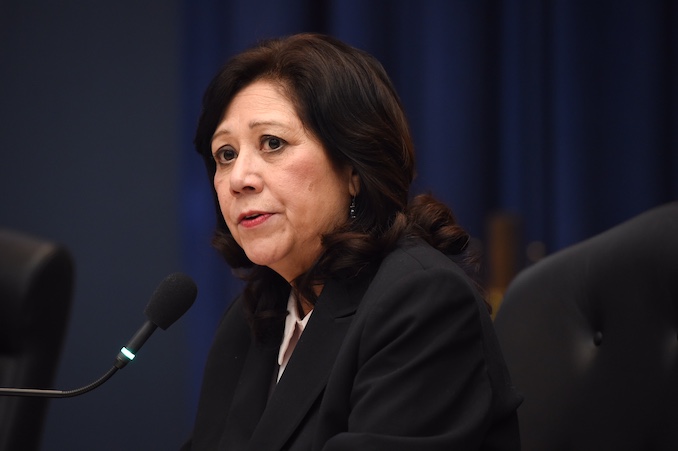
As more than 1,000 young adults in Los Angeles are set to age out of foster care on New Year’s Eve, county leaders are scrambling to find them all stable homes.
The youth raised in government care who are set to lose basic needs benefits had been granted a reprieve during the pandemic. They turned 21, but did not have to leave the program known as “extended foster care” that provides housing and other government assistance. That extension ends statewide on Dec. 31, leaving dozens of young people who are in their early 20s and lack family support without a lifeline.
“It is a very scary time for them,” foster youth attorney Lindsay Verity told county supervisors today at a virtual public meeting. “Without stable housing their ability to stay in school or keep a job is almost impossible. Just last week one client said to me, ‘I’m fighting for my life out here.’”
To stave off hundreds of youth left destitute, the county board of supervisors unanimously passed a motion directing multiple county agencies to ensure each soon-to-be former foster youth is matched with “rapid rehousing” funds and other benefits to prevent them becoming homeless. County agencies now have 10 days to come up with a plan.
“For many youth the pandemic is still going on and affecting their daily life,” said Taneil Franklin, a former foster youth and advocate with L.A. Opportunity Youth Collaborative, at the meeting. “If they become homeless their mental health will decline.”
Supervisor Hilda Solis, who co-authored the motion with Supervisor Janice Hahn, said approximately 1,100 Los Angeles youth took advantage of the state’s emergency extension of foster care benefits that extended beyond age 21, the age under normal circumstances when housing and financial benefits end. She said the vast majority have plans in place for stable housing once the extension expires on Dec. 31, but roughly 50 do not.
Solis and Hahn describe the looming deadline as a “housing cliff,” noting that those without sufficient income to replace the lost benefits could quickly face homelessness.

In response, the motion passed today directs the Department of Children and Family Services to collaborate with the Los Angeles Homeless Services Authority and the Departments of Mental Health and Public Social Services to identify funding and available benefits, and to assist eligible youth in applying for services and assistance. If needed, the board has committed to approving emergency funds for the effort.
Verity, an attorney with Children’s Law Center serving young people ages 18 and older in extended foster care, said at least 30 of her clients don’t know where they’re going to live on Jan. 1.
“My clients typically don’t have everything necessary to get their own apartment,” she said, noting the county’s insufficient supply of affordable housing. “They don’t have credit. They don’t have someone who can co-sign a lease for them. They don’t have a job making two to three times the monthly rent. They need our support.”
Mindful of such concerns, supervisors passed two additional motions aimed at increasing the stock of transitional housing available for current and former foster youth. One directs the county child welfare department to opt into a state program that funds housing navigators who help youth identify, secure and maintain stable housing. The other directs the department to participate in a state program that will increase the number of transitional housing slots available to former foster youth through age 25.
Solis, who authored these two motions as well, said opting into the two state programs would allow 226 more youth to be matched with housing navigators, and would add 51 transitional beds for former foster youth — increasing the current countywide supply of housing slots for this population by roughly 40%.
“We have what it takes to ensure that these youth have stable housing,” Solis said. “And at a time when a new variant may take hold, we owe it to these youth to ensure that they have what they need to have a successful transition.”





